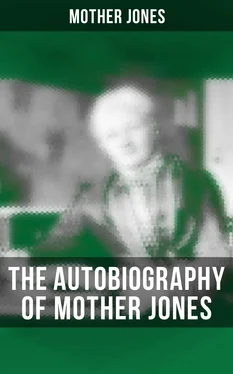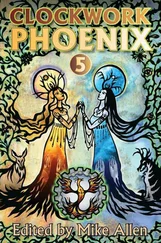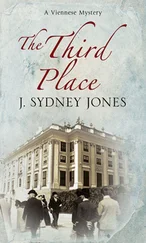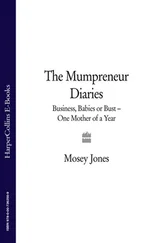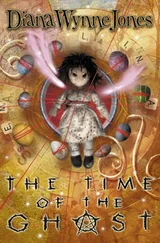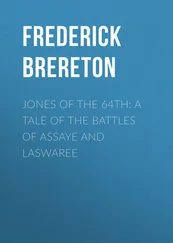The employers used the cry of anarchism to kill the movement. A person who believed in an eight-hour working day was, they said, an enemy to his country, a traitor, an anarchist. The foundations of government were being gnawed away by the anarchist rats. Feeling was bitter. The city was divided into two angry camps. The working people on one side – hungry, cold, jobless, fighting gunmen and police clubs with bare hands. On the other side the employers, knowing neither hunger nor cold, supported by the newspapers, by the police, by all the power of the great state itself.
The anarchists took advantage of the widespread discontent to preach their doctrines. Orators used to address huge crowds on the windy, barren shore of Lake Michigan. Although I never endorsed the philosophy of anarchism, I often attended the meetings on the lake shore, listening to what these teachers of a new order had to say to the workers.
Meanwhile the employers were meeting. They met in the mansion of George M. Pullman on Prairie Avenue or in the residence of Wirt Dexter, an able corporation lawyer. They discussed means of killing the eight-hour movement which was to be ushered in by a general strike. They discussed methods of dispersing the meetings of the anarchists.
A bitterly cold winter set in. Long unemployment resulted in terrible suffering. Bread lines increased. Soup kitchens could not handle the applicants. Thousands knew actual misery.
On Christmas day, hundreds of poverty stricken people in rags and tatters, in thin clothes, in wretched shoes paraded on fashionable Prairie Avenue before the mansions of the rich, before their employers, carrying the black flag. I thought the parade an insane move on the part of the anarchists, as it only served to make feeling more bitter. As a matter of fact, it had no educational value whatever and only served to increase the employers' fear, to make the police more savage, and the public less sympathetic to the real distress of the workers
The first of May, which was to usher in the eight-hour day uprising, came. The newspapers had done everything to alarm the people. All over the city there were strikes and walkouts. Employers quaked in their boots. They saw revolution. The workers in the McCormick Harvester Works gathered outside the factory. Those inside who did not join the strikers were called scabs. Bricks were thrown. Windows were broken. The scabs were threatened. Some one turned in a riot call.
The police without warning charged down upon the workers, shooting into their midst, clubbing right and left. Many were trampled under horses' feet. Numbers were shot dead. Skulls were broken. Young men and young girls were clubbed to death.
The Pinkerton agency formed armed bands of ex-convicts and hoodlums and hired them to capitalists at eight dollars a day, to picket the factories and incite trouble.
On the evening of May 4th, the anarchists held a meeting in the shabby, dirty district known to later history as Haymarket Square. All about were railway tracks, dingy saloons and the dirty tenements of the poor. A half a block away was the Desplaines Street Police Station presided over by John Bonfield, a man without tact or discretion or sympathy, a most brutal believer in suppression as the method to settle industrial unrest.
Carter Harrison, the mayor of Chicago, attended the meeting of the anarchists and moved in and about the crowds in the square. After leaving, he went to the Chief of Police and instructed him to send no mounted police to the meeting, as it was being peacefully conducted and the presence of mounted police would only add fuel to fires already burning red in the workers' hearts. But orders perhaps came from other quarters, for disregarding the report of the mayor, the chief of police sent mounted policemen in large numbers to the meeting.
One of the anarchist speakers was addressing the crowd. A bomb was dropped from a window overlooking the square. A number of the police were killed in the explosion that followed.
The city went insane and the newspapers did everything to keep it like a madhouse. The workers' cry for justice was drowned in the shriek for revenge. Bombs were "found" every five minutes. Men went armed and gun stores kept open nights. Hundreds were arrested. Only those who had agitated for an eight-hour day, however, were brought to trial and a few months later hanged. But the man, Schnaubelt, who actually threw the bomb was never brought into the case, nor was his part in the terrible drama ever officially made clear.
The leaders in the eight hour day movement were hanged Friday, November the 11th. That day Chicago's rich had chills and fever. Rope stretched in all directions from the jail. Police men were stationed along the ropes armed with riot rifles. Special patrols watched all approaches to the jail. The roofs about the grim stone building were black with police. The newspapers fed the public imagination with stories of uprisings and jail deliveries.
But there were no uprisings, no jail deliveries, except that of Louis Lingg, the only real preacher of violence among all the condemned men. He outwitted the gallows by biting a percussion cap and blowing off his head.
The Sunday following the executions, the funerals were held. Thousands of workers marched behind the black hearses, not because they were anarchists but they felt that these men, whatever their theories, were martyrs to the workers' struggle. The procession wound through miles and miles of streets densely packed with silent people.
In the cemetery of Waldheim, the dead were buried. But with them was not buried their cause. The struggle for the eight hour day, for more human conditions and relations between man and man lived on, and still lives on.
Seven years later, Governor Altgeld, after reading all the evidence in the case, pardoned the three anarchists who had escaped the gallows and were serving life sentences in jail. He said the verdict was unjustifiable, as had William Dean Howells and William Morris at the time of its execution. Governor Altgeld committed political suicide by his brave action but he is remembered by all those who love truth and those who have the courage to confess it.
CHAPTER III
A STRIKE IN VIRGINIA
Table of Contents
It was about 1891 when I was down in Virginia. There was a strike in the Dietz mines and the boys had sent for me. When I got off the train at Norton a fellow walked up to me and asked me if I were Mother Jones.
"Yes, I am Mother Jones."
He looked terribly frightened. "The superintendent told me that if you came down here he would blow out your brains. He said he didn't want to see you 'round these parts."
"You tell the superintendent that I am not coming to see him anyway. I am coming to see the miners."
As we stood talking a poor fellow, all skin and bones, joined us.
"Do you see those cars over there, Mother on the siding?" He pointed to cars filled with coal.
"Well, we made a contract with the coal company to fill those cars for so much, and after we had made the contract, they put lower bottoms in the cars, so that they would hold another ton or so. I have worked for this company all my life and all I have now is this old worn-out frame."
We couldn't get a hall to hold a meeting. Every one was afraid to rent to us. Finally the colored people consented to give us their church for our meeting. Just as we were about to start the colored chairman came to me and said: "Mother, the coal company gave us this ground that the church is on. They have sent word that they will take it from us if we let you speak here."
I would not let those poor souls lose their ground so I adjourned the meeting to the four corners of the public roads. When the meeting was over and the people had dispersed, I asked my co-worker, Dud Hado, a fellow from Iowa, if he would go with me up to the post office. He was a kindly soul but easily frightened.
Читать дальше
